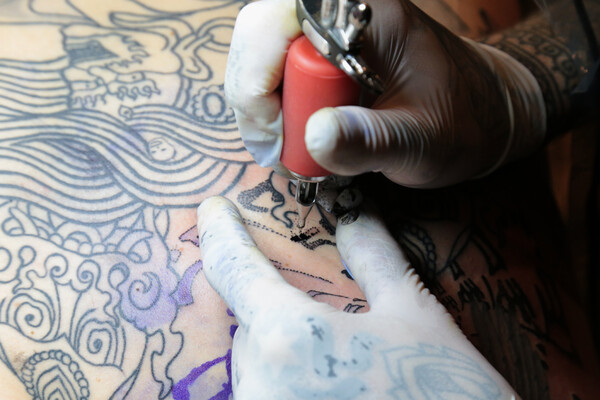Japan had been a strong ally of the Korean medical community in the controversy over the tattoo and semi-permanent makeup procedures.

Faced with the argument that opening the way for tattoo and semi-permanent makeup procedures for non-medical people is a “global trend,” the domestic medical community refuted it, saying, “Japan is also still regulating it.”
In Japan, semi-permanent makeup is called “medical art makeup.” As the word “medical” is attached, only doctors or medical personnel instructed and supervised by doctors can do it. Violators were punished for breaking the “Medical Law.”
Since tattooing is also an act of injecting pigments into the skin with a tool attached to a needle and is equivalent to semi-permanent makeup, the Japanese government has punished unlicensed people who performed the procedure according to the Medical Law.
In 2018, however, the Osaka High Court excluded tattooing from medical practice for the first time. The court overturned the original verdict that convicted a tattooist accused of violating the Medical Law and acquitted the tattooist.
Two years later, in an appeal held in 2020, the Supreme Court of Japan upheld the ruling. The top court defined tattoo procedures as “artistic activities,” unlike semi-permanent makeup, which is a medical practice. The indicted tattooist was acquitted, and non-medical personnel also could do tattoo drawings.
‘Tattoo drawing has its own historical and artistic significance’
The Japanese court classified semi-permanent cosmetics and tattoo drawing as separate acts.
The Osaka High Court said semi-permanent cosmetic surgery is “a procedure that inserts pigments into eyebrows, eyeliner, and lips to conceal scars or spots or for beauty purposes,” concluding it as an apparent medical practice that falls into the category of cosmetic surgery.
It said, “Cosmetic surgery is a medical practice from an aesthetic point of view, as it dissolves inferiority complex and dissatisfaction resulting from the feelings of adoration for physical beauty, and pursues physical and mental health,” judging that semi-permanent cosmetic surgery also conforms with this definition.
On the other hand, the court defined tattoo drawing as a creative act that contains individuals’ will to express, saying, “It is a symbolic element and one of the traditional customs with artistic significance. Unlike medicine, it requires knowledge of art and aesthetic skills.”
The Supreme Court also saw the interpretation of the appellate court as justifiable. “Even if they (tattooing and semi-permanent makeup) are conducted in the same way and principle, it (whether it is a medical practice) can be judged differently depending on the purpose and situation,” it said.
top court also said that society should not deny the demand for tattooists by stipulating only doctors can conduct it. At the same time, there is a slim possibility that doctors would appear only to specialize in tattooing.
Despite end of the judicial controversy, legislative void remains to ensure safety
The Supreme Court excluded tattooing from medical practice but also accepted concerns about health and hygiene risks. The top court said that tattooing is an act that damages the body. Therefore, the crime of injury can be established depending on the content and results. It also pointed to the need for “new legislation” to prevent this, but related procedures are being carried out slowly.
In April 2022, the Japanese Ministry of Health, Welfare, and Labor excluded tattooing needles and machines from medical devices as stipulated in the “Act on the quality, effectiveness, and safety of medicines and medical devices. The ministry made it possible to purchase even cosmetic plastic surgery devices without a doctor's license if they are used for tattooing.
However, some criticized that the purchase qualification changed depending on using the same devices and materials, only increasing confusion. The ministry only told related organizations and institutions to call for caution in their use. Still, there are no related systems or guidelines. The Japan Tattooist Association is discussing establishing guidelines for tattoo procedures with the ministry but has yet to produce results.
The semi-permanent cosmetics sector also called for deregulation. They say that it is unreasonable to use only the purpose of the procedure as the standard when the devices and methods used in the procedure are the same. There is also a proposal to manage “art makeup professionals’ qualifications.”
In Japan, the controversy over tattooing as a medical practice ended with the judiciary's judgment. However, the confusion caused by the legislative and administrative vacuum is expected to continue for the time being, leaving a lesson for their Korean counterparts who have yet to enter that stage.

